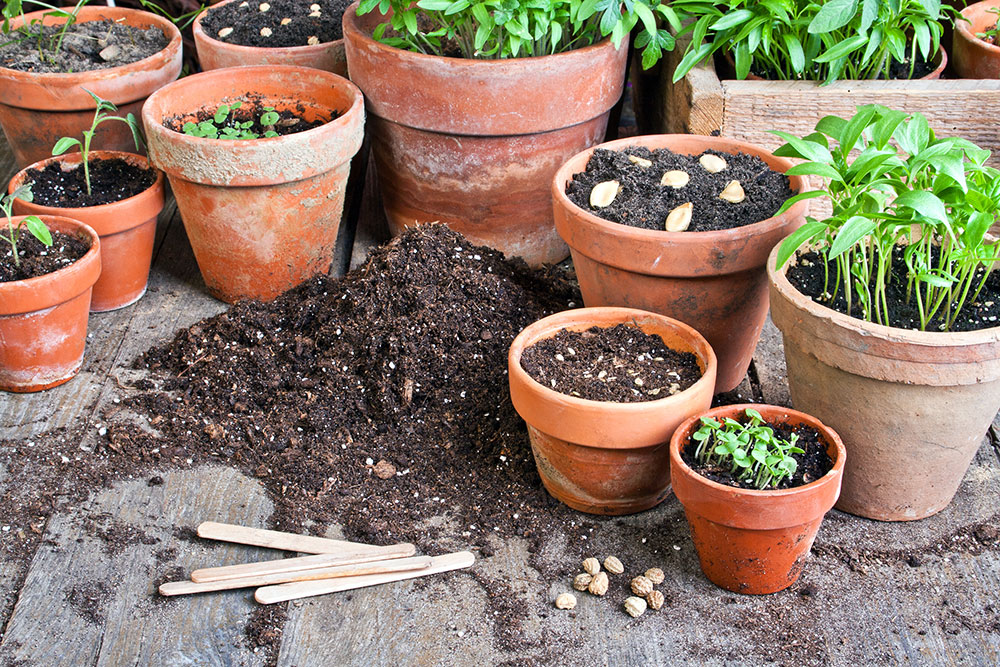
30 Nov Growing Veggies Without a Garden
Growing Veggies Without a Garden
There is absolutely no need to feel despondent about growing your own veggies if you don’t own a garden as there are some easy and practical solutions to get around this. I hope this tip list helps any of you that don’t have a permanent patch of land to call your own – YET!
1. Use a good container planting mix. Any commercial potting mix will be compromised of mostly organic matter, which will help it hold more air and water, plus it is lighter so wont put so much pressure on your balcony or the post you are using. The stuff you find in a vacant lot will definitely not be adequate. Clay soil will also not provide enough air spaces and sandy soil will not hold enough water.
2. Be sure the containers you use are deep enough for the crops you plan to grow. Too shallow a pot will stunt the plants and this is particularly important when you will be eating the fruits your plant bares. Given adequate depth, often the best containers for salad crops like lettuce or carrots are wider than tall, so you can have more plants, while tomatoes, peppers or herbs are often grown one to a pot. I am growing strawberries donated by a very loving customer of ours and have found the yogurt tubs are just high enough.
For example:
— In a container 12 – 20 cm deep:
Leaf lettuce, arugula, mizuna, mesclun, baby pak choi, beets, short or round carrots, green onions, radishes, dwarf cherry tomatoes, cilantro, chives, chervil.
— In a container 25 to 40 cm deep:
Mustard greens, gai lan, Swiss chard, short carrots, bush beans, bush peas, small-fruited mild or chili peppers, patio-type tomato varieties, strawberries, potatoes, garlic, basil, oregano, marjoram, parsley, chives, rau ram (Vietnamese coriander), mint.
— In a container 35 to 50 cm deep:
Tall peas (shelling, snow, or snap), pole beans, squash, full-sized tomato varieties, broccoli, collards, kale, full-sized mild or chili peppers, cucumbers, African blue basil.
— In a container 50 to 70 cm deep:
Full-sized tomatoes (especially indeterminate, or tall ones).
3. Plan ahead. So for ease of watering, make sure your pots and trays are near a water source. Plants in containers need water more often than ones in the ground. You could perhaps use a watering hose attached to an indoor sink.
4. Provide drainage holes in containers. This is really important for plants in pots. The best thing to do is to drill holes in the pots and then to put the containers up on small wooden blocks or bricks in trays. I have heard mixed reports about putting stones at the bottom of containers that don’t have holes, but bigger pieces of broken clays pots do definitely provide better drainage in a pot that does not have holes.
5. Place containers where they will get adequate sunlight. Those raised for their roots, such as carrots, beets and radishes, will tolerate partial shade, as will leafy vegetables. Crops grown for their fruits commonly require at least five hours of full, direct sunlight every day, but perform better with eight to ten hours. The root vegetables can stand more shade than those which bear fruit, such as cucumbers, peppers, tomatoes and eggplants.
6. Avoid spots that are too windy. Roofs may get plenty of sun, but remember that a sea breeze will be stronger at roof level.
7. Know your fertilizer. Purchased potting mix comes with some fertilizer already in it, but vegetables have high fertility needs and will use it up rather quickly. If you have a worm bin, you can dig in 1/2 to 1 inch of worm compost before you plant, or use a purchased organic or slow-release fertilizer as the package directs. If plants are growing slowly, or lack good leaf colour, chances are that they lack water rather than fertility, but if you are watering regularly and they still aren’t thriving, water weekly with a liquid fertilizer such as fish emulsion, diluted according to package directions. Be weary of killing the plants with too much organic fertilizer though – I speak from experience here. The easiest way to add fertilizer to plants raising in containers is by preparing a nutrient solution and pouring it over the soil mix. If you use an organic fertilizer at planting time, supplement it with weekly applications of fish emulsion or apply dry organic fertilizer according to package directions. Tomatoes like regular feedings of small amounts of fertilizer rather than infrequent, large doses.
Did you know?
It works really well to grow potatoes in tyres. You only need about three tyres but from what I have read many people go as high as six. Plant the seed potatoes in the first tyre. Mix compost with dirt as soon as the plants are about 20cms high. Once the vine protrudes through the soil you are able to add more tyres and more soil. You can go as high as you would like to.
The one trick here is not to cover the vine totally but to always leave a few leaves sticking out. If you do cover it, the vine will begin to rot and you will lose your spuds. It’s time to harvest your potatoes when the vine begins to brown and die down. Then you can start pulling the stack apart (ie removing tyres as you need to harvest) and gleaning your fresh potatoes.



Pingback:Kitchen Gardening 101 - Growing Your Own Produce Can Be Easy - Faithful to Nature Natural and Organic Blog
Posted at 11:08h, 27 March[…] simple and extremely rewarding. Plant a few seeds, watch them grow and you’ll realise that you don’t necessarily need a huge garden to grow an impressive harvest of organic […]